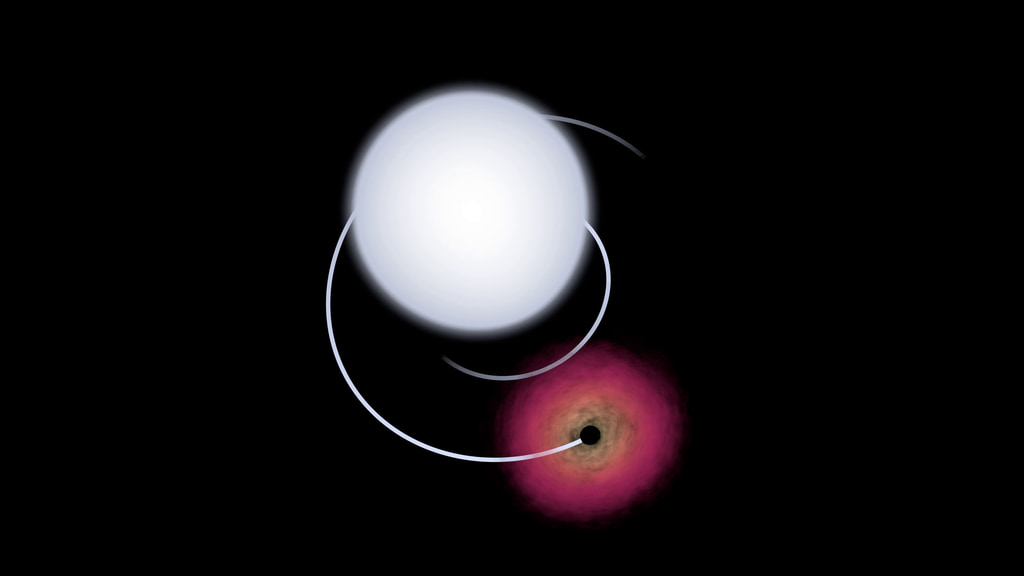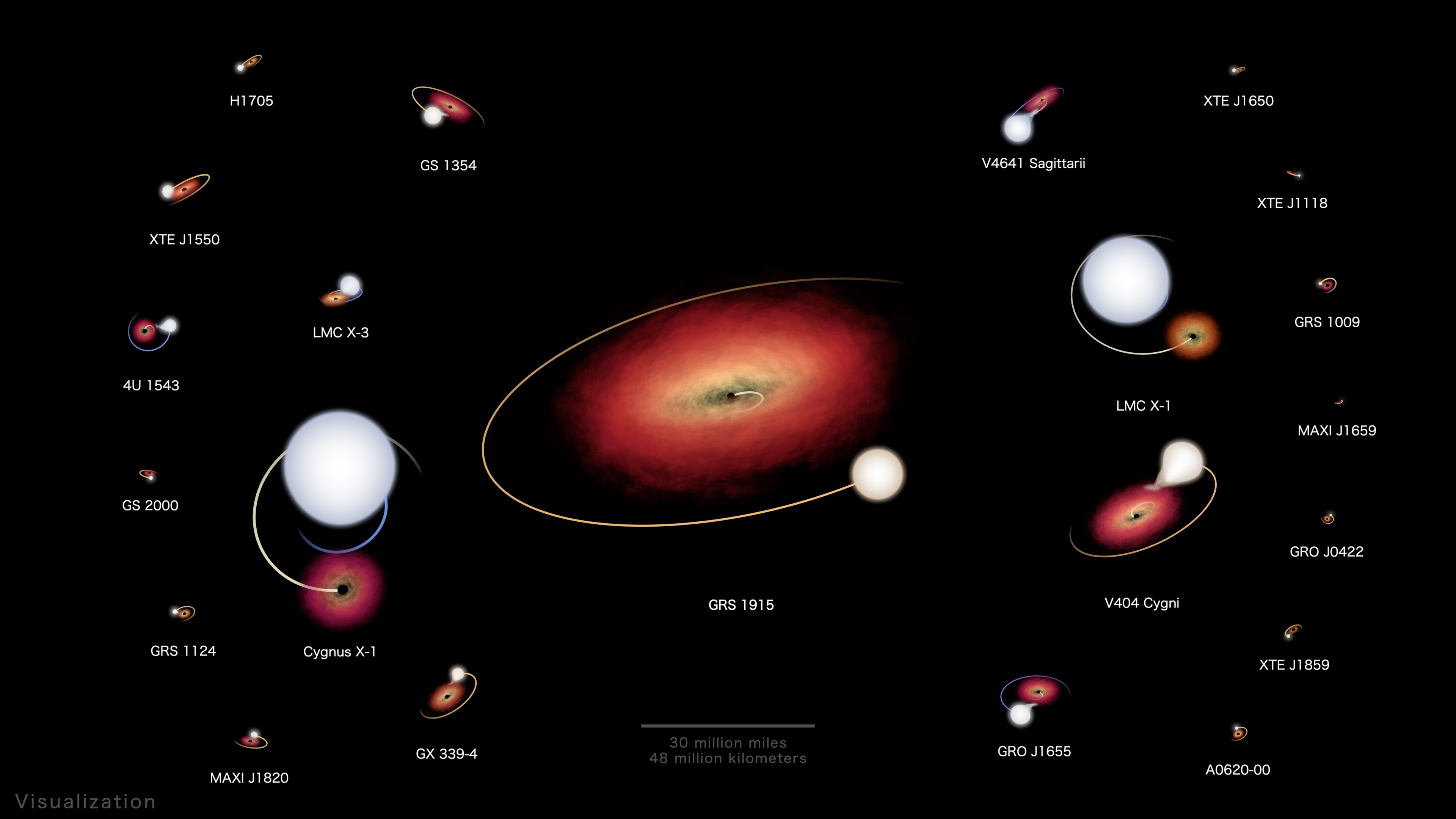An Orrery of Black Holes and Their Companions
Full visualization of the binary system black hole orrery with labels and legend included.
Credit: NASA's Scientific Visualization Studio
This visualization shows 22 X-ray binaries in our Milky Way galaxy and its nearest neighbor, the Large Magellanic Cloud, that host confirmed stellar-mass black holes.
The systems are shown at the same physical scale, and their orbital motion is sped up by nearly 22,000 times. All of the binaries are angled to replicate our view of them from Earth. The star colors range from blue-white to reddish, representing temperatures from 5 times hotter to 45% cooler than our Sun. Because the accretion disks reach even higher temperatures, they use a different color scheme.
While the black holes appear on a scale reflecting their masses, all are depicted using spheres much larger than actual size. Cygnus X-1’s black hole, the first one ever confirmed, weighs about 21 times more than the Sun, but its surface – called its event horizon – spans only about 77 miles (124 kilometers). The enlarged spheres also cover up visible distortions produced by the black holes’ gravitational effects.
In most of these systems, a stream of gas often flows directly from the star toward the black hole, forming around it a broad, flattened structure called an accretion disk. In others, like Cygnus X-1, a massive star produces a thick outflow called a stellar wind, some of which becomes swept up by the black hole’s intense gravity. Gas in the accretion disk heats up as the material slowly spirals inward, glowing in visible, ultraviolet, and finally X-ray light.

A star map showing the galactic locations of each binary system. Two images are provided, with labels in basic 2D projection for flat screen displays, and in equirectangluar projection for spherical displays like VR or fulldome. More information available here: Deep Star Maps 2020
Credit: NASA's Scientific Visualization Studio
Choreographed video that explains the elements of the binary system black hole orrery visualization.
Credit: NASA's Scientific Visualization Studio
Behind the scenes video of the making of this visualization.
Credit: NASA's Scientific Visualization Studio
Music Credit: "Screen Saver" Kevin MacLeod (incompetech.com) Licensed under Creative Commons: By Attribution 4.0 License
Binary systems only, with lines tracing the binary system orbits.
Credit: NASA's Scientific Visualization Studio
Binary systems only, without orbit lines.
Credit: NASA's Scientific Visualization Studio
Credits
Please give credit for this item to:
NASA's Scientific Visualization Studio
-
Visualizers
- Andrew J Christensen (SSAI)
- Mark SubbaRao (NASA/GSFC)
-
Scientist
- Jeremy Schnittman (NASA/GSFC)
-
Producer
- Scott Wiessinger (KBR Wyle Services, LLC)
-
Writer
- Francis Reddy (University of Maryland College Park)
-
Technical support
- Laurence Schuler (ADNET Systems, Inc.)
- Ian Jones (ADNET Systems, Inc.)
Release date
This page was originally published on Monday, May 2, 2022.
This page was last updated on Monday, January 6, 2025 at 12:24 AM EST.

